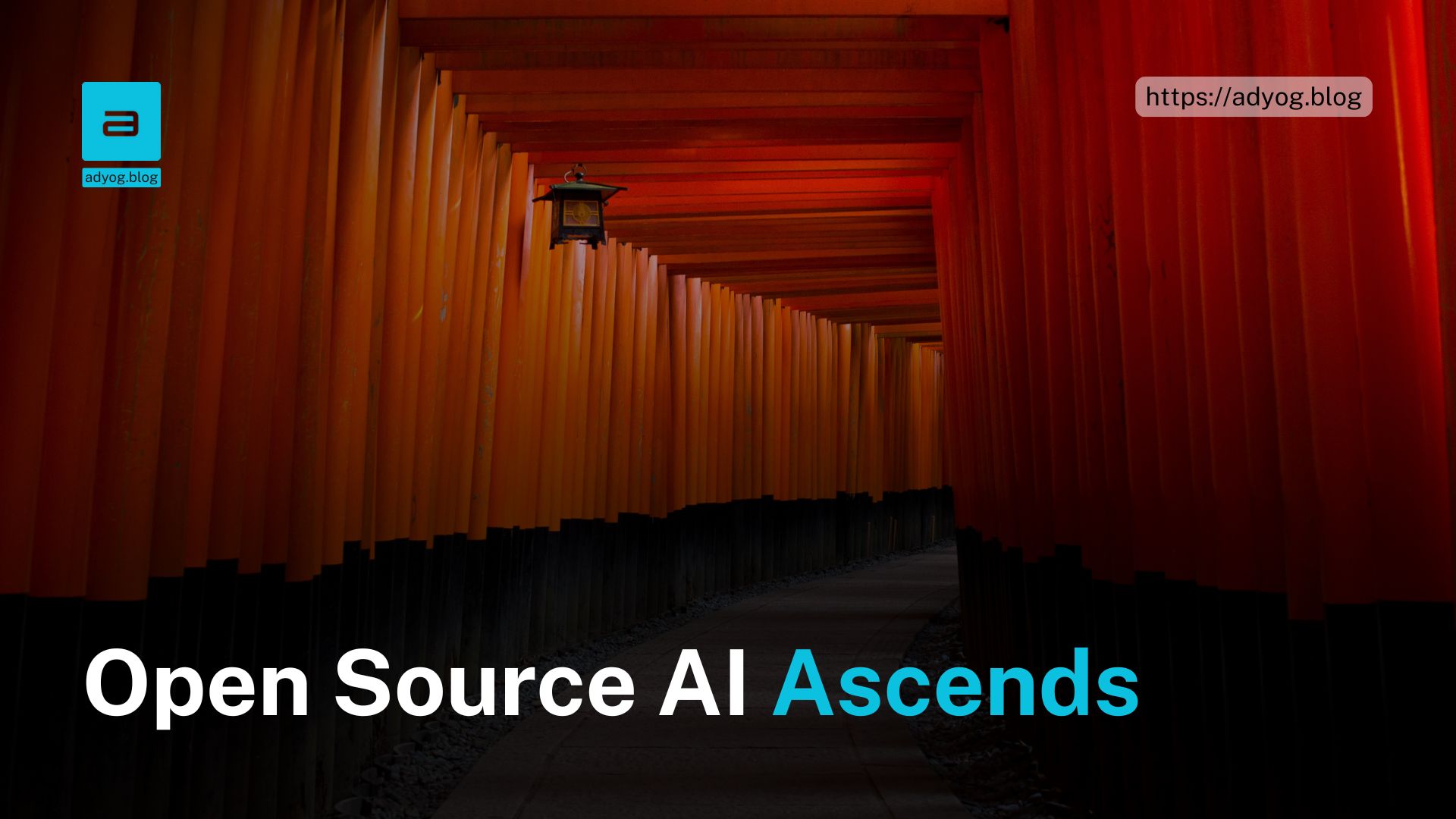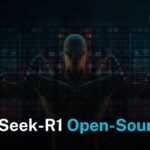Open-Source AI is set to disrupt the landscape in 2025, with models like Llama 2, Mistral, DeepSeek, and Phi-4 leading the charge. Offering adaptability, cost-efficiency, and privacy compliance, open-source models are becoming the go-to solution for enterprises seeking customizable and scalable AI solutions. This analysis dives into their potential to temporarily overtake proprietary giants like GPT-4 and Google Gemini, reshaping the AI ecosystem.
Key Players in Open-Source AI
1. Meta’s Llama Models:
- Llama 2:
- Quasi-open licensing enabled broad experimentation and fine-tuning.
- Achieved near-proprietary performance on key benchmarks like MMLU.
- Widely adopted by enterprises leveraging frameworks like Hugging Face Transformers for seamless integration.
2. Mistral:
- Mistral 7B:
- Compact yet powerful, offering high performance in low-resource environments.
- Designed for edge AI applications and real-time inference scenarios.
- MoE Architectures:
- Pioneering mixture-of-experts (MoE) models for task-specific routing, significantly improving efficiency.
3. DeepSeek V3:
- Disruptive Pricing:
- APIs priced far below proprietary competitors, democratizing access to advanced AI.
- Niche Strengths:
- Excels in low-resource language NLP, making it ideal for underserved linguistic markets.
- Popular in cost-sensitive sectors like startups and SMEs.
4. Phi-4:
- Lightweight Efficiency:
- Phi-4 focuses on general-purpose reasoning tasks with a compact architecture that outperforms many larger models on specific metrics.
- Optimized for mobile and embedded systems, broadening the accessibility of AI.
- Innovative Features:
- Introduces adaptive sparsity mechanisms, improving energy efficiency without compromising performance.
- Suitable for scenarios requiring fast, localized inference, such as IoT applications and wearable devices.
Advantages of Open-Source Models
- Adaptability:
- Enterprises can fine-tune models like Phi-4 and Mistral for specific use cases, such as fraud detection or personalized customer service.
- Open frameworks (e.g., LoRA, PEFT) streamline customization, reducing time-to-market.
- Cost Efficiency:
- Models like DeepSeek significantly reduce API expenses compared to proprietary models (e.g., $2.50 per million tokens for GPT-4 vs. compute-only costs for open models).
- Phi-4’s efficiency lowers operational costs, making it ideal for scaling small businesses.
- Privacy and Security:
- Self-hosted solutions like Llama 2 ensure sensitive data never leaves the organization.
- Compliance with regulations such as GDPR and HIPAA fosters trust in industries like healthcare and finance.
- Ease of Deployment:
- Phi-4’s lightweight design facilitates deployment on resource-constrained devices like IoT hubs and mobile platforms.
- Collaborative Innovation:
- Community-driven contributions to open models (e.g., via GitHub) accelerate optimization and bug fixes.
Quantifying Impact
- Market Share:
- By mid-2025, open-source models are expected to capture 25-30% of enterprise AI deployments, particularly in finance and e-commerce.
- Cost Savings:
- Enterprises adopting Phi-4 or Mistral can reduce cloud inference costs by up to 40%, depending on workload and infrastructure.
Ethical Considerations
- Bias and Misinformation:
- Open models may perpetuate biases if training data isn’t sufficiently diverse.
- Lack of centralized control can lead to misuse for generating deepfakes, propaganda, or harmful content.
- Transparency:
- Open-source models provide visibility into architecture and data usage, promoting ethical practices compared to black-box proprietary systems.
- Mitigation Strategies:
- Community guidelines and AI governance frameworks are essential for ethical deployment and use.
The Role of Regulations
- Data Privacy:
- Regulations like EU AI Act and California Consumer Privacy Act (CCPA) encourage open models for their ability to remain localized and secure.
- Intellectual Property:
- Licensing complexities (e.g., Llama 2’s quasi-open status) require clarity to avoid potential legal challenges in commercial settings.
- Global AI Policies:
- Governments are likely to support open-source initiatives to reduce reliance on dominant proprietary providers, promoting technological sovereignty.
Future of Open-Source AI
- Federated Learning:
- Integration of federated learning with open models can enable decentralized training, preserving privacy while improving performance across diverse datasets.
- Decentralized Computing:
- Open-source models like Phi-4 could integrate with frameworks like blockchain or distributed computing to create scalable, decentralized AI ecosystems.
- Collaborative Ecosystems:
- Initiatives like BigScience and Hugging Face will continue driving innovation through global collaboration, ensuring continuous improvement.
- Hybrid AI Solutions:
- Enterprises may adopt hybrid approaches, combining the adaptability of open models with the cutting-edge capabilities of proprietary systems.
Challenges for Proprietary Models
- Economic Pressures:
- Proprietary systems like GPT-4 will need to lower API costs or risk losing market share to open competitors.
- Innovation Pacing:
- Open models leverage collective innovation, potentially outpacing proprietary R&D in niche areas.
- Adoption Barriers:
- Companies entrenched in proprietary ecosystems (e.g., Microsoft Azure) may face challenges transitioning to open solutions.
Temporary Surge: Why It Won’t Last
While open-source AI models like Llama 2, Mistral, DeepSeek, and Phi-4 are poised to disrupt the market in 2025, their dominance may be short-lived due to the following factors:
1. Proprietary Innovations
- Next-Gen Architectures: Proprietary models like GPT-4 Turbo and Google Gemini leverage advanced architectures, such as sparse transformers and multi-modal capabilities, providing unmatched performance and versatility.
- R&D Powerhouses: Companies like OpenAI and Google invest billions annually in innovation, giving them an edge in areas like training efficiency and real-world reasoning.
- Integrated Ecosystems: Proprietary models come bundled with tools like Microsoft Copilot and Google Workspace AI, delivering seamless functionality within enterprise workflows.
2. Strategic Pricing
- Reduced API Costs: Proprietary providers have shown a willingness to cut API prices, as seen with OpenAI’s 90% reduction in GPT-4 API costs in 2024.
- Freemium Models: Offering basic access for free while monetizing advanced features, proprietary platforms create value across a broader customer base.
- Ecosystem Subsidization: Giants like Microsoft and Google can offset AI costs by bundling them with other cloud services, a tactic unavailable to open-source projects.
3. Enterprise Ecosystem Lock-In
- Deep Integration: Many enterprises are heavily invested in platforms like Azure and Google Cloud, making switching to open-source models complex and costly.
- Migration Barriers: Transitioning from proprietary systems involves retraining staff, reconfiguring workflows, and potential downtime, deterring many companies from adopting open models.
- Unique Features: Proprietary systems offer domain-specific optimizations, regulatory compliance, and advanced tools not yet matched by open alternatives.
Although open-source AI will see a surge in adoption, the sustained advantages of proprietary providers in innovation, pricing strategies, and ecosystem integration will likely ensure their dominance in the long run. Open models may thrive in specific niches, but proprietary solutions remain indispensable for enterprises seeking cutting-edge capabilities and seamless integration.
Conclusion
By integrating Phi-4, Llama 2, Mistral, and DeepSeek, open-source AI offers a compelling alternative to proprietary models in 2025. Their advantages in flexibility, cost-efficiency, and privacy compliance make them attractive for enterprises across diverse sectors. However, challenges like fragmentation, ethical concerns, and competitive pressures from proprietary giants underscore the temporary nature of their dominance.
As AI regulations evolve and innovation accelerates, open-source AI is poised to remain a vital part of the AI ecosystem, reshaping how businesses and developers access and leverage cutting-edge technology.





Leave a Reply